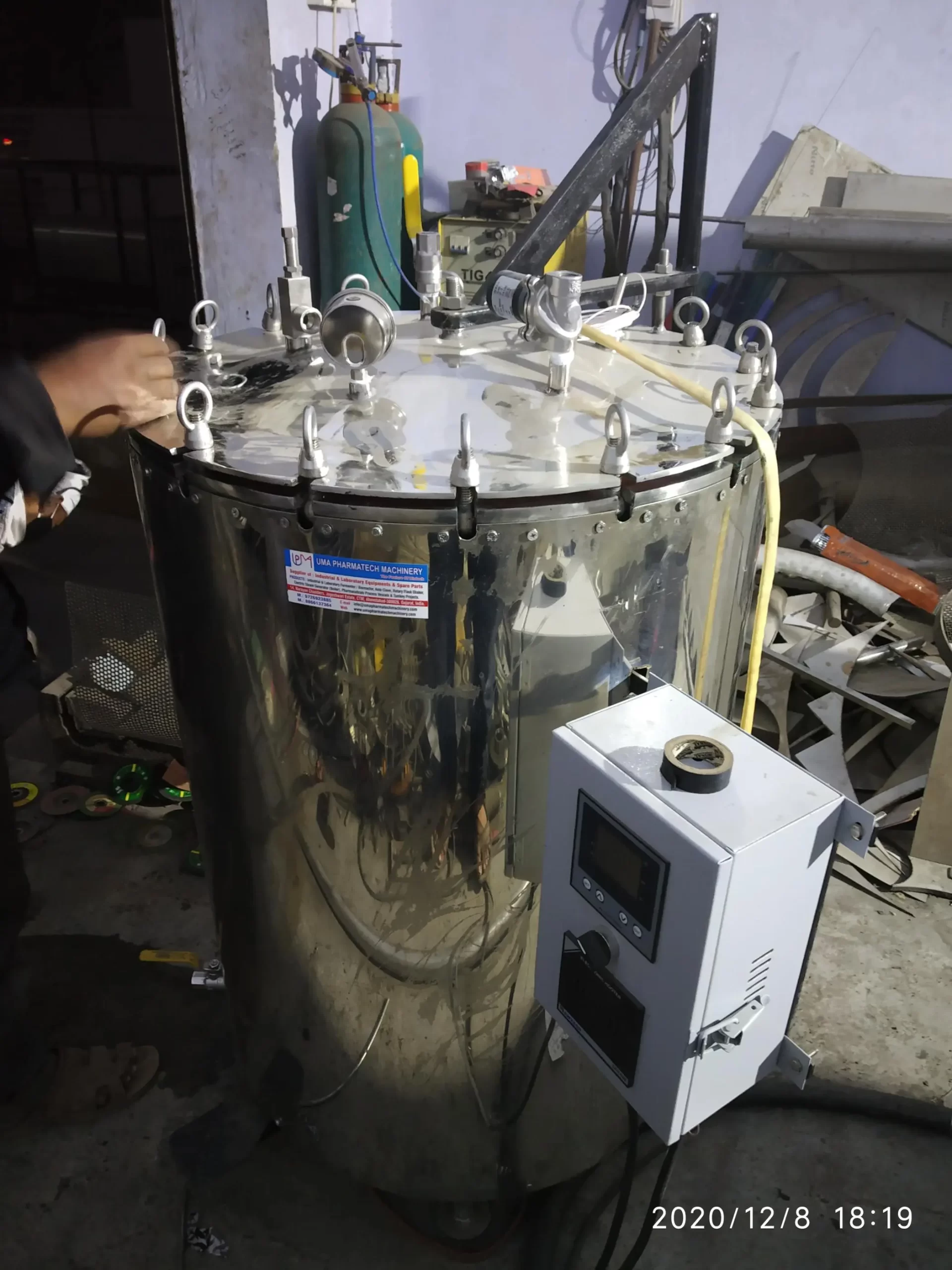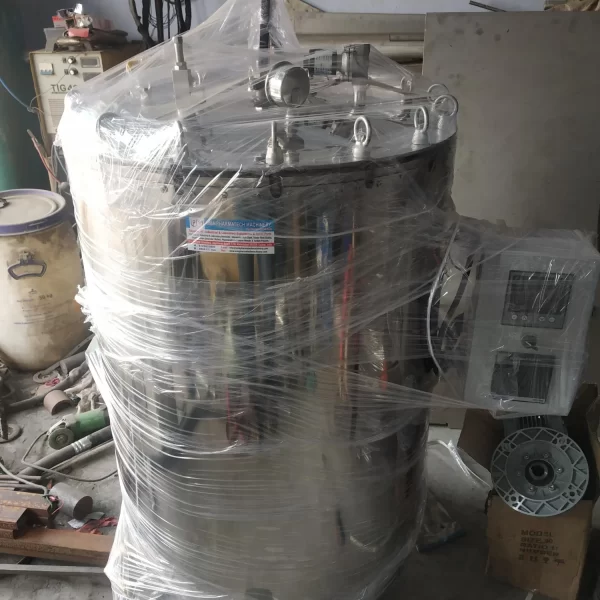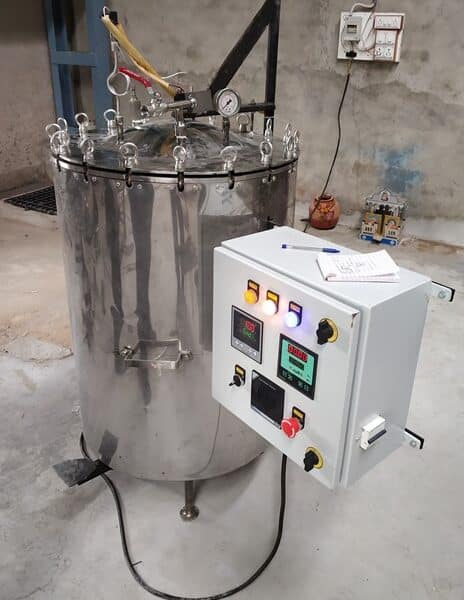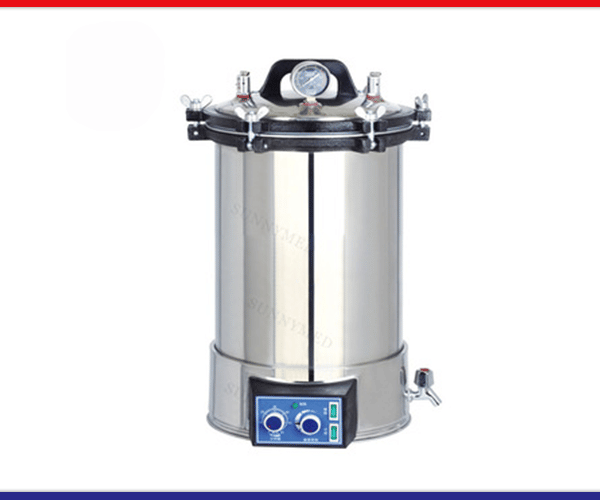
UPM-119

| Models | UPM-119 |
|---|---|
| Capacity | 119 litter |
| Inner Size(cm) | 40 dia. X 75 h |
| Capacity (Watts) | 6000 |
| Inner Chamber | Stainless Steel 304 quality |
| External | Stainless Steel 304 quality |
| Range | Ambient to 15 psi pressure / 121.40C |
| Controller | Mechanical Spring loaded value / μ based temp. controller (GMP) |
| Sensor | PT 100 (GMP) |
| Accuracy | 0.10C˚ (GMP) |
| Uniformity | 0.20C˚ (GMP) |
| Max. Temperature | 121.40C˚ |
| Insulation | Air Bank 50 mm/rockwool/glass wool |
| Top Lid | With Dome Shape Die press Stainless Steel Plate |
| tax | As Applicable(18% GST) |
| payment | 70% Advanced with po and 30% Before Delivery |
| validity | 30day from quote |
Introduction:
In laboratories and hospitals, vertical autoclaves are crucial pieces of equipment for sterilizing a variety of materials. To eliminate germs and other microbes, they employ high-pressure steam. We will give you in-depth details on vertical autoclaves, their applications, advantages, and upkeep in this Website.

Manufacturer Of Vertical Autoclave Sterilizer1
Vertical autoclaves: What are they?
Sterilization is accomplished using vertical autoclaves in labs, medical facilities, and academic institutions. To eliminate germs and other microbes, they employ high-pressure steam. Vertical autoclaves are cylindrical in design and have a door that hinges and a cover that locks. In order to destroy germs, the autoclave works by boiling water to produce steam, which is then pumped into the chamber.
Vertical autoclaves are utilized in a variety of fields, such as the medical, pharmaceutical, research, and laboratory industries. They are frequently used to sterilize glassware, medical devices, surgical tools, and other items that cannot be sterilized using other techniques. Here are some of the applications for vertical autoclaves:

Vertical Autoclave Manufacturer
Healthcare: To stop the transmission of contagious diseases, vertical autoclaves are used to sterilize medical supplies such surgical instruments, gloves, and gowns.
Pharmaceutical Industry: Glassware, containers, and machinery used in the manufacture of pharmaceuticals are sterilized in vertical autoclaves.
Vertical autoclaves are used in laboratories and research settings to sterilize items including petri dishes, culture media, and experimental tools.

Laboratory Autoclave Manufacturer
The use of vertical autoclaves has a number of advantages, including the following:
Vertical autoclaves effectively sterilize materials by using high-pressure steam to kill bacteria and other germs.
Cost-Effective: Because they do not use disposable materials, vertical autoclaves are a cost-effective way to sterilize objects.
Vertical autoclaves are simple to use and require little training.
Vertical autoclaves are a versatile piece of equipment since they can sterilize a variety of materials.
Safety: In order to prevent mishaps, vertical autoclaves are equipped with safety measures including pressure release valves and alarms.

Double Wall Autoclave Manufacturer
Maintenance of Vertical Autoclaves:
It’s critical to carry out routine maintenance on your Vertical Autoclave to ensure its longevity and to keep it operating efficiently. The following advice may help you maintain your vertical autoclave:
After each usage, clean the autoclave to avoid the growth of germs and other pollutants.
Check the pressure gauge, safety valves, and temperature sensors on the autoclave on a regular basis.
To avoid accidents, replace any worn-out or damaged components right away.
To make sure the autoclave is operating properly, perform regular maintenance on it.

Double Wall Vertical Autoclave Sterilizer
Vertical autoclaves are an essential piece of equipment in labs, hospitals, and research facilities, to sum up. They are a practical, affordable form of sterilization that successfully sterilizes materials. You can make sure that your vertical autoclave operates properly and maintains its efficacy by according to the preceding maintenance advice.










